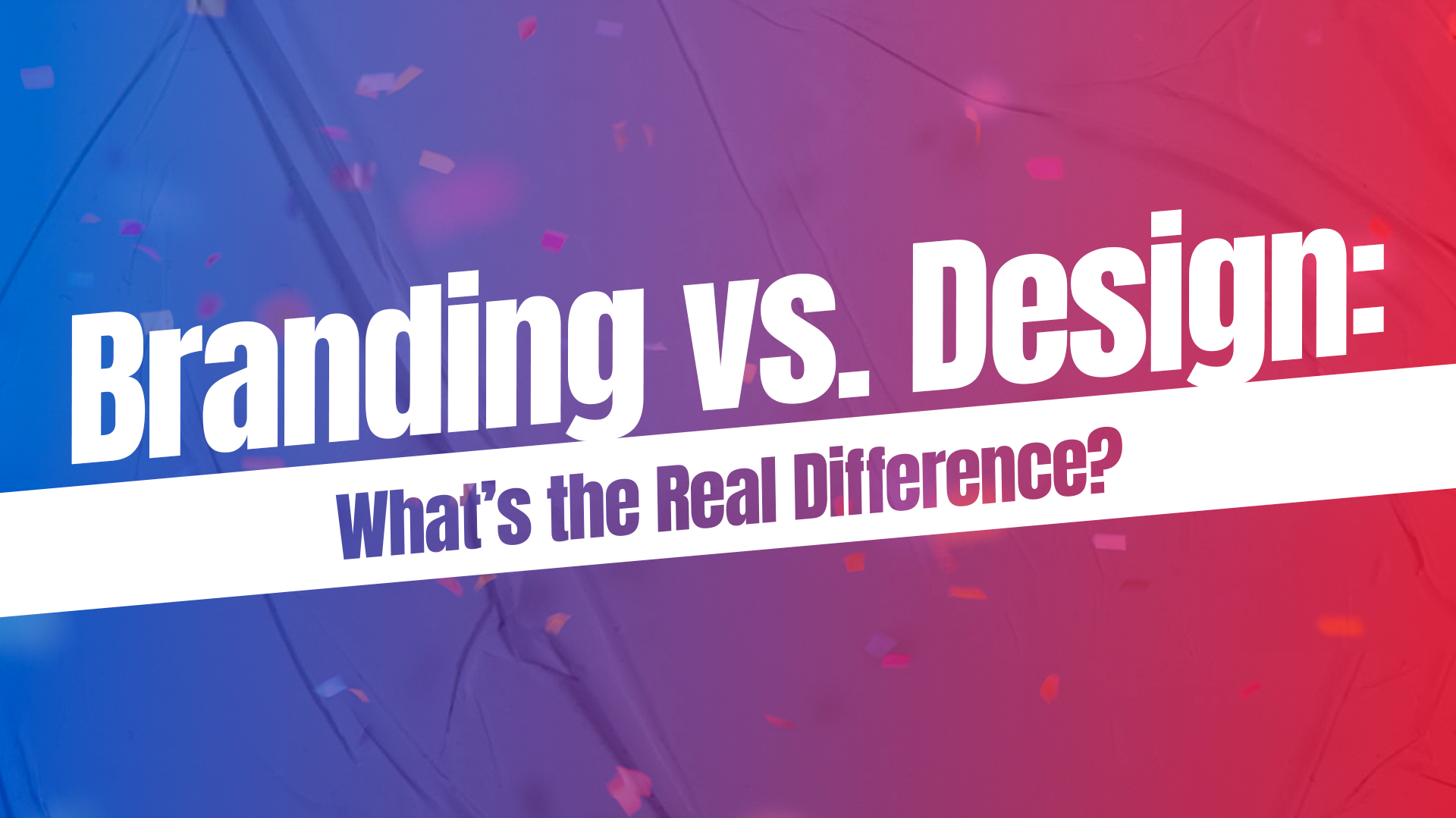Branding vs. Design: What’s the Real Difference?
In today’s digital world, terms like “branding” and “design” are often used interchangeably. Many businesses think that creating a logo or choosing colors is enough to define their brand—but that’s only one piece of the puzzle. While design is an essential part of your brand, it’s not the full picture.
Understanding the difference between branding and design can completely transform the way you present your business. In this article, we’ll break down what makes them distinct, how they work together, and why both are vital for your success.
What Is Branding?
Branding is the soul of your business. It’s the emotional and psychological relationship your audience has with your company. Your brand is not just your visuals—it’s your values, mission, tone, and the story you tell through every customer interaction.
Branding answers questions like:
- Who are we as a company?
- What do we stand for?
- How do we make people feel?
- Why should customers choose us over others?
In short, branding is how people perceive you. It’s the long-term impression that stays in their minds long after the first interaction.
What Is Design?
Design is the visual expression of your brand. It’s how you communicate your identity to the world through visual elements such as your logo, typography, color palette, website layout, packaging, and marketing materials.
Design answers questions like:
- What does our brand look like?
- How do we visually communicate our values?
- How do we create consistency across all platforms?
Good design brings your brand to life. It turns your brand strategy into tangible visuals that attract and engage your audience.
Branding Comes Before Design
Here’s the key truth: branding comes first, design comes second. You can’t create an effective visual identity if you haven’t defined your brand’s foundation.
Imagine trying to design a logo without understanding your mission, target audience, or tone of voice. The result might look nice—but it won’t connect with your customers emotionally or strategically. A strong brand strategy ensures that every design choice aligns with your overall vision.
How Branding and Design Work Together
While different in purpose, branding and design work hand in hand. Think of branding as your message and design as the language you use to communicate it visually. When done right, they reinforce each other and create a cohesive, memorable identity.
Here’s how they connect:
- Branding defines the “why.” Design expresses the “how.”
- Branding builds emotion. Design triggers visual recognition.
- Branding creates the strategy. Design executes that strategy in every touchpoint.
For example, Apple’s brand represents innovation, simplicity, and quality. Its design—clean lines, white space, and minimalist packaging—reflects that identity perfectly.
Common Mistake: Confusing the Two
Many businesses make the mistake of jumping straight into design without developing a clear brand foundation. They spend time and money on logos and websites but fail to connect with their audience because there’s no underlying message or emotion.
Without branding, design is just decoration. Without design, branding is invisible. You need both to build trust and recognition.
Why Understanding the Difference Matters
Knowing the difference between branding and design helps you make smarter business decisions. You’ll understand when to invest in strategy (branding) and when to refine visuals (design). It also helps you maintain consistency—so your messaging and visuals always align.
When your brand and design work together seamlessly, customers feel a sense of familiarity and trust. That’s what turns one-time buyers into loyal fans.
Final Thoughts
Branding is the heart of your business; design is its face. You can’t have one without the other. Branding gives meaning to your visuals, while design makes those meanings visible to the world. When these two elements are aligned, your business stands out, connects emotionally, and builds long-term loyalty.
At Mat Media, we help businesses craft authentic brands and translate them into beautiful, conversion-focused designs. Whether you’re defining your brand strategy or redesigning your identity, our team ensures your visuals reflect your true purpose and resonate with your audience.

